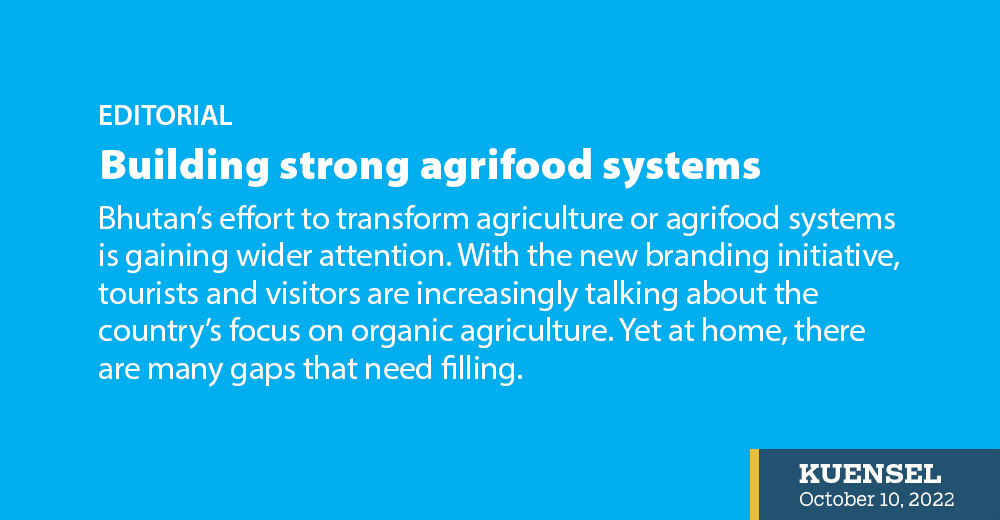Bhutan’s effort to transform agriculture or agrifood systems is gaining wider attention. With the new branding initiative, tourists and visitors are increasingly talking about the country’s focus on organic agriculture. Yet at home, there are many gaps that need filling.
The agriculture minister’s recent statement at a high-level conference in Bangkok, Thailand brought the actual picture of the situation upfront.
There is no denying that agriculture has been the mainstay of livelihood for more than half of the Bhutanese population and it contributes significantly to the country’s gross domestic product. However, building a resilient and productive agricultural system continues to face myriad challenges, not to mention limited arable land and difficult terrain. And the new challenges such as soil fertility loss and impacts of climate change are threatening to affect production.
Lyonpo said that Bhutan aspires “to have high-performance food systems by 2030” which “should be resilient to shocks and climate change; effectively provide affordable, safe and nutritious food for all, provides gainful employment, empower women and vulnerable and ultimately advance towards the fulfilment of the SDGs.”
As the United Nations’ Food and Agriculture Organization observed, rising food prices, floods, drought, and increasing climate-related disasters, among others, are affecting the region’s most vulnerable people. “In summary, the region’s complex agrifood systems are under enormous strain.”
The biggest threat in the sector will be to smallholders. Therefore, Bhutan can ill afford to not fast-track the transformation of the country’s agrifood systems. That means focusing on better production and nutrition.
With financial support from the European Union, Bhutan’s agricultural development has received a major boost; we have already launched a programme to promote an inclusive, sustainable and resilient agricultural food system. However, Bhutan’s food production focus cannot be based only on quality. We need both quality and quantity.
This will require Bhutan to revolutionise the foundations of the agriculture sector such as developing comprehensive plans for soil fertility, land use, and land lease, securing investments and technology to stem wildlife conflict, and securing inputs such as seeds, fertilisers and machinery, among others. In the face of increasing population and import figures, not forgetting the inherent challenges such as emptying rural households and rising unemployment among the country’s young people, the time has come for agriculture development must take a new turn.
To put the picture in the perspective, of the total arable land in the country of just 7 percent—664,000 acres—only 2.93 percent is under cultivation. On the other hand, the fallowing of land is increasing. On the last count, in 2019, total fallow land constituted 66,120.32 acres. As an agrarian country with a large percentage of the population in the sector, it is important that the sector receives a leg up.
These are the issues that we must address when we talk about building sustainable and resilient agricultural food systems.


